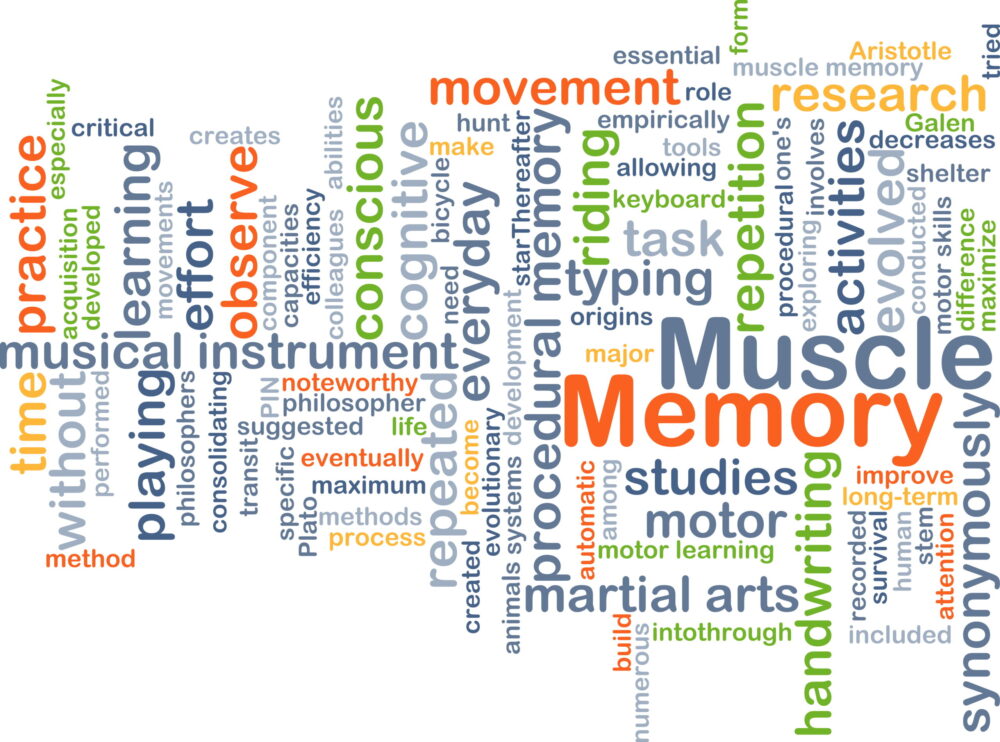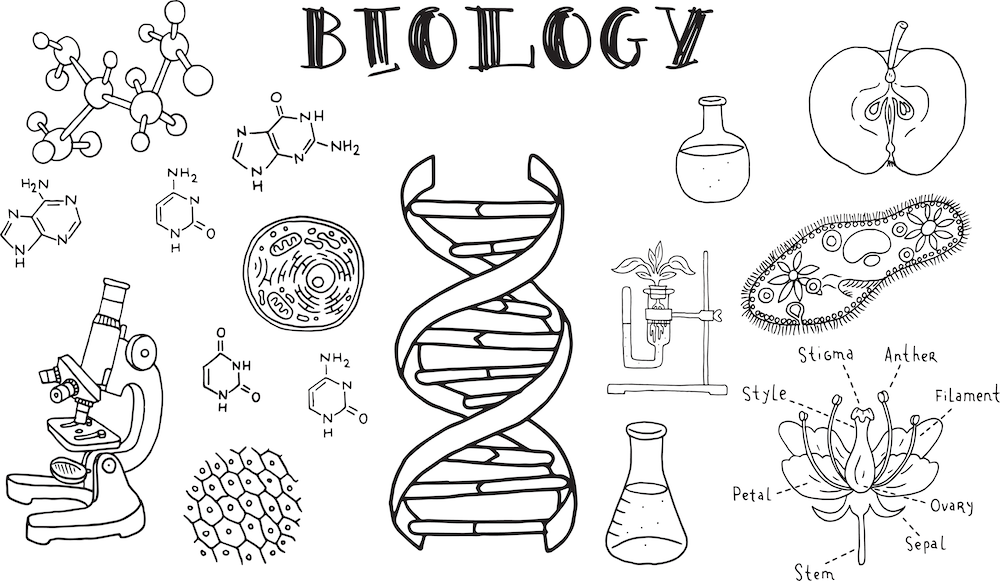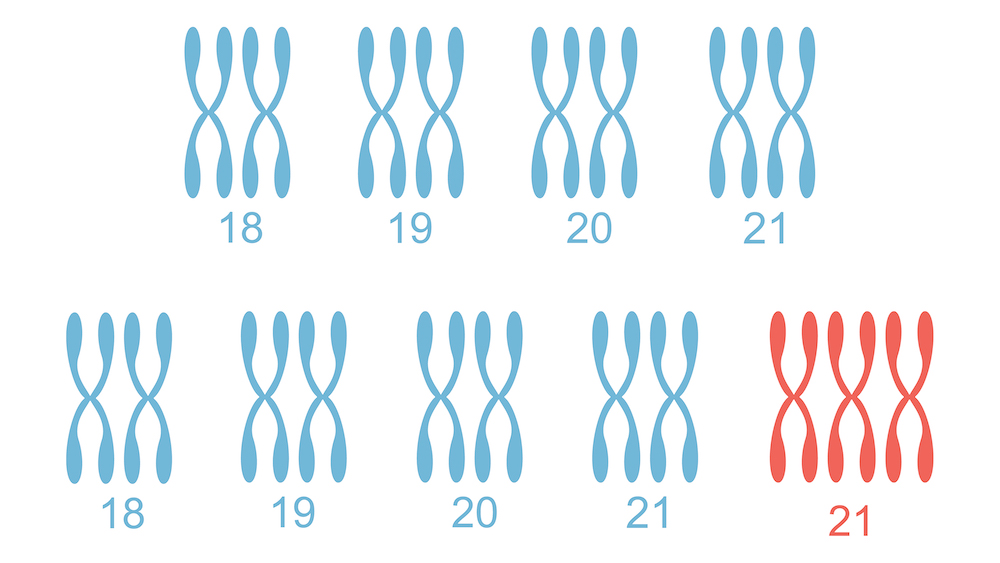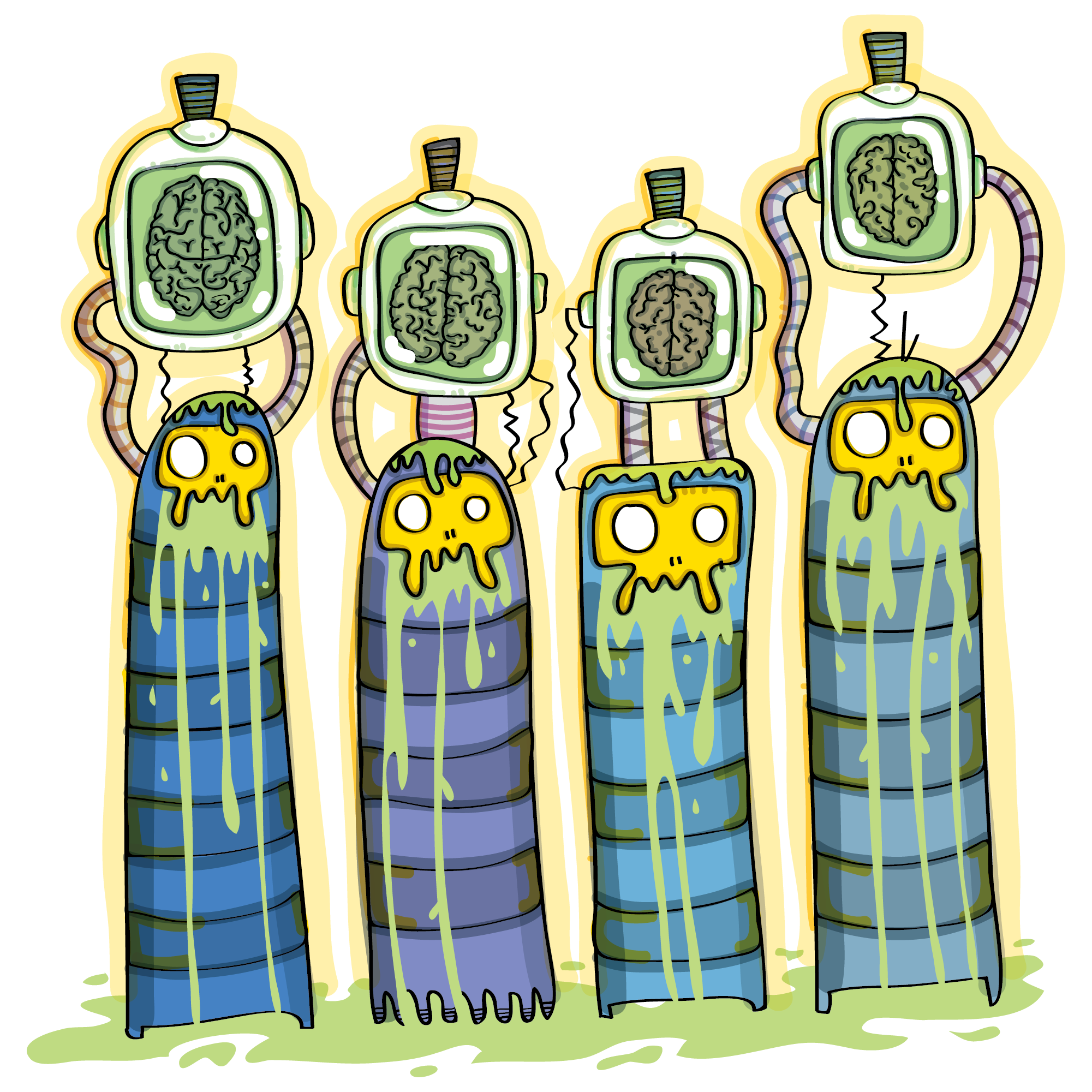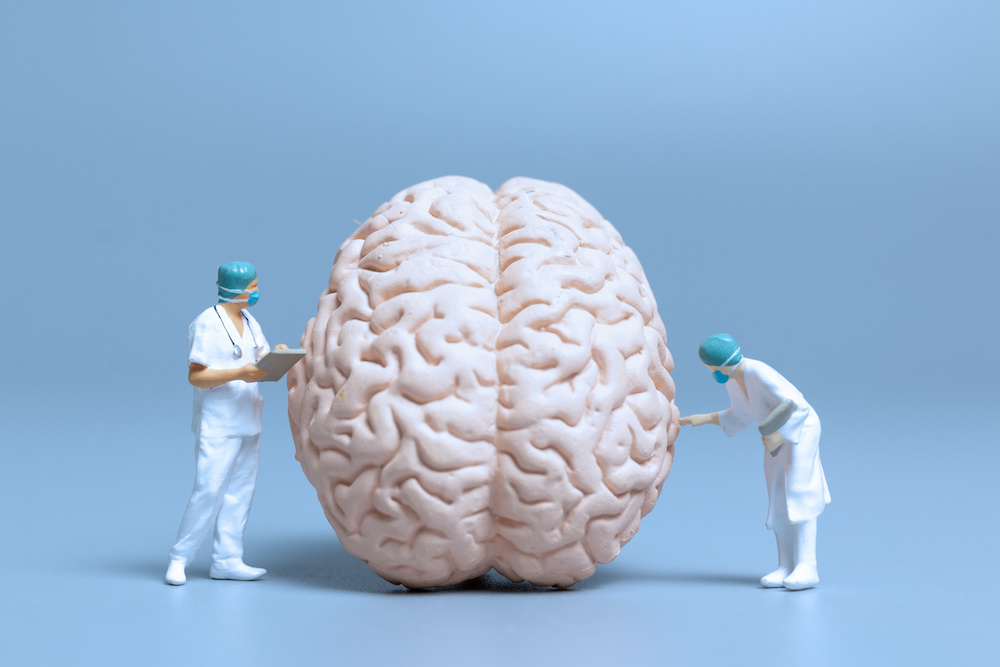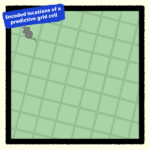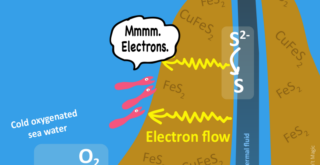Recently, I found out that the RIKEN Center for Brain Science (CBS) has an interview series called “Brain science ’round midnight”. You can imagine that the interviews are not interviews at all, but rather just conversations in a Tokyo bar with smooth jazz music playing in the background. The conversations are with Kaoru Takeuchi, an ex-physicist turned science writer who, you can imagine, also owns and tends bar with his cat Pickles. Below, you can read the latest conversation with Thomas McHugh, team leader of the Laboratory for Circuit and Behavioral Physiology. Thomas is a native Chicagoan like me, and his research is so cool that we can forgive him for being a White Sox fan (Go Cubs Go!).” So sit back, relax, turn some smooth jazz, and read on.
It all started with my brother
Takeuchi: Tom, you were born in Chicago, in the United States, received your PhD degree from MIT (Massachusetts Institute of Technology), and after working as a postdoctoral fellow, you built your research team in Japan. I heard that you have been doing research on memory since moving from the States. Did you originally have a clear reason for wanting to become a research scientist?
McHugh: I enjoyed science and math in school and performed well in those subjects, so even at an early age I liked the “idea” of being a scientist.. At the time however, I honestly did not really know what that would mean, what training was needed, what jobs were actually available, but I loved science and was very passionate about it.
Takeuchi: Were you interested in the sciences in general?
McHugh: I was particularly interested in biology. I was very impressed with my first advanced biology class in ninth grade (equivalent to Year 2 of junior high school in Japan), and the teacher was wonderful. He gave us the chance to learn through simple but engaging experiments in the classroom and that really brought the ideas and concepts to life.
Takeuchi: I heard that you have a big family with nine brothers and sisters. Even in Japan, large families are rare these days due to the declining birthrate. In what order were you born among your siblings?
McHugh: I was the ninth, the last child.
Takeuchi: Being the youngest of nine siblings, you must have many stories to tell! Have you been influenced by your eight brothers and sisters in your life and, in particular, in your career?
McHugh: Yes, I was and am still very much influenced by them. I am especially influenced by my oldest brother, Patrick, who passed away about 6 years ago. He had Down Syndrome, also known as Trisomy 21. This is a genetic disorder in which there are three copies of chromosome 21 instead of the usual two. Each of my seven brothers and sisters, except Patrick, went on to have a higher education and left home to become independent, but my brother lived at home all the time. I also lived at home until I went to college, so we spent the longest time together and were very close. I think he was the one who first got me interested in the origins of life and biology.
Takeuchi: Your closest brother seems to have left a major impact on your life, indeed. I have heard that Down Syndrome results in the slow development of the body and mind and that the probability of health-related complications is relatively high.
McHugh: First of all, my brother lived to the age of 60, even though doctors originally said he would not live for longer than a week or two after he was born. I wondered what determines the length of one’s life. It is also known that Down Syndrome is more likely to occur in babies born to relatively older mothers compared to younger mothers. But since my brother was my mother’s first child and I was her last, that is, I was the child she had when she was considerably older, this is a relatively rare instance where this observation may not apply. However, although rare, it did happen to my mother and my brother. In other words, this is a genetic mutation that can happen to anyone with a certain probability, and I have always wondered how it is possible to have developmental differences and symptoms just because of an increase in one chromosome copy.
Patient HM and the beginning of memory research
Takeuchi: You spent your childhood pondering the mysteries of life and biology. Then, you went on to higher education and decided to pursue a career in science. I heard that you have been researching memory since your doctoral research days as well. It sounds interesting.
McHugh: Our memory is full of mysteries. How are memories encoded by the brain? How are these memories stored over long periods and how retrieved and recalled? These are some of the big questions about memory. In my laboratory, we are working to categorize those questions a bit more and explore how the circuits woven by neurons (nerve cells) involved in memory are organized, how there are patterns of neural circuit activity, and how these physiological patterns are related to various memory processes. The perceptions, sensations, and identities that seem so obvious, such as “who I am,” are shaped by memories within me from the past to the present. Memory is one of the essential brain functions, isn’t it? Although research on memory has been progressing rapidly in recent years, there is still a lot we do not know. I have realized since I was a student that it would take many years to clarify the physiological mechanisms of memory ……and I was absolutely right.
Takeuchi: I see. Memory is a natural brain function, so I think it is actually rather surprising that we still have such limited understanding of how it works. With the exception of Alzheimer’s disease and other brain diseases, our brain stores past memories, what we have learned, and spatial maps to assist us with navigating to specific locations; I think we can freely recall these kinds of information when needed.
McHugh: Yes, that is right. In fact, a major turning point event recently occurred in memory research. A famous patient contributed not only to memory research but also to the advancement of the field of neuroscience. He was initially referred to by his “HM,” but now his name, Henry Molaison, has been published. He was born in 1926 and died in 2008. Molaison developed epilepsy as an aftereffect of a bicycle accident as a child, which was quite severe and difficult to cure with the treatments and medications available at the time. His epileptic seizures were frequent and interfered with his daily life, and his doctors decided to try a surgical approach. That was in 1953. At the time, the medical community was already aware that epileptic seizures originate from activity in the hippocampus. As the doctors hypothesized, if we physically remove the hippocampus and surrounding brain regions, the seizures might stop.
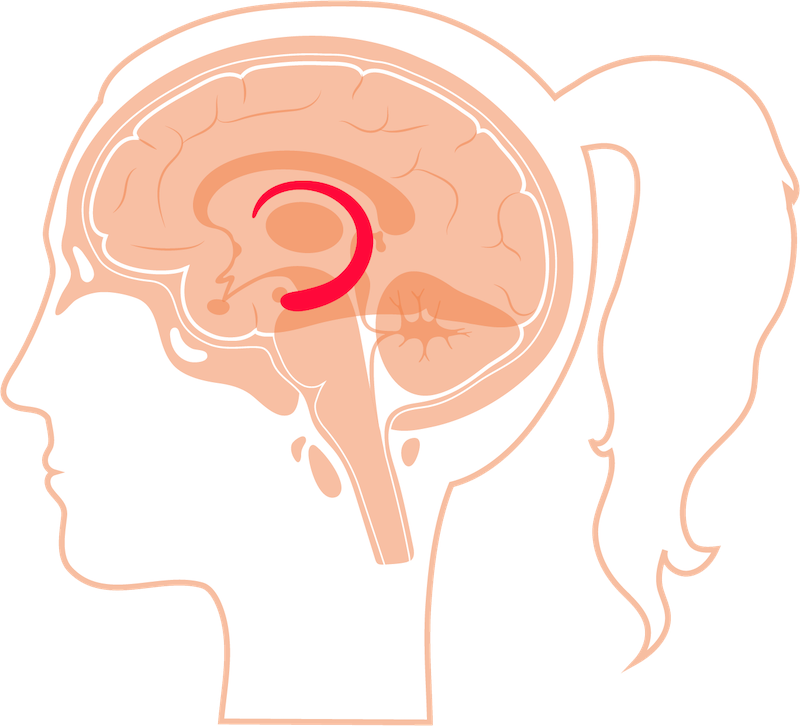
Location of the hippocampus. You can read more about patient HM and see the difference between a normal brain and HM’s brain after surgery by following this link: https://www.brainfacts.org/in-the-lab/tools-and-techniques/2018/the-curious-case-of-patient-hm-082818
Takeuchi: So, for example, in the case of cancer, it is the same as the idea of removing bad cells.
McHugh: That is right. As a result, the surgery was successful enough in its objective to “get rid of the seizures,” and his epilepsy was truly in remission. However, it came at an unforeseen and significant cost. After the surgery, Molaison lost all ability to form new memories—that is, he developed severe amnesia. This case was the first clue to show mankind that the hippocampus plays an important role for memory, and it led to major findings in memory research.
Takeuchi: So, it was only after the removal of a specific brain region that its role was understood. As you say, the surgery was performed in the 1950s; so it was not that long ago but actually more recent.
McHugh: Although the exploration of the brain has been ongoing since the times of the ancient Greeks, formal research has only been conducted recently. Starting with the lessons learned from the Molaison case, research on the non-surgical damage caused by stroke and various types of diseases caused by damage to the hippocampus has progressed. In addition, studies have been conducted to examine the function of the hippocampus in detail using model animals such as mice. Particularly, in the past 20 years, innovative advancements have been made in the technologies used to conduct research, allowing us to observe physical phenomena in the brains of model animals and to test hypotheses in vivo. It is now clear that the hippocampus is necessary for the formation of new memories—at least those called “episodic memories,” among other types. That requires the hippocampus to be in perfect condition. This is an absolute necessity.
Takeuchi: What are episodic memories?
McHugh: They are memories of when, where, and what you did. Most of the memories of what we experienced in the past are episodic memories.
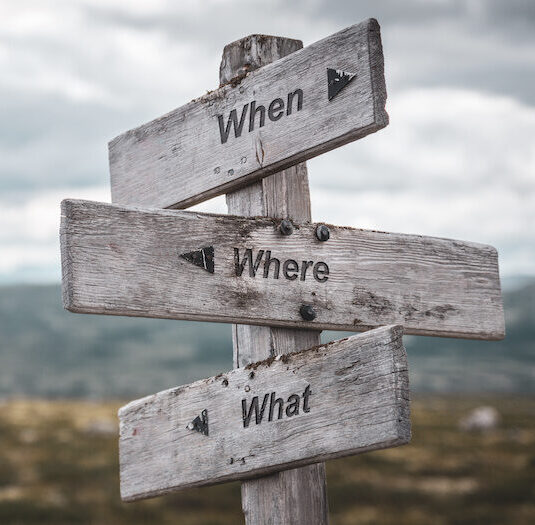
Episodic memories are the what, where, and when of your experiences.
Takeuchi: Does that mean that if we lose the hippocampus, we cannot remember events that happened, for example?
McHugh: That’s correct. In Molaison’s case, other types of memory functioned well. Psychologists Brenda Milner and Suzanne Corkin studied Molaison for 50 years (see: “Permanent Present Tense: The Unforgettable Life of the Amnesiac Patient, H.M.“). They had Molaison perform and record various memory tasks postoperatively, and he came to the lab enthusiastic about them. For example, he had no problems with the task of touching the different colored blocks—red, blue, green, red, blue—and so on in a predetermined order. This type of memory is called procedural memory, and it does not require the hippocampus. The next day, however, when they asked Molaison, “Have you ever done this task before?” he replied, “No, I haven’t.” When he actually tried to do the task, he found that he had done it once the day before, and so he improved, but he still could not remember that he had completed the task before at all. Other assignments that required short-term memory, such as completing words from images seen just before, were completed without any problem, and he still remembered the exercises he had learned in the past. In other words, his brain was fully functional with respect to motor, procedural, and short-term memory, but only episodic memory, such as “Have you done that in the past?” was not stored or recalled.
The many kinds of memory
Takeuchi: So, you are saying that there are different types of memories and that some memories depend on the hippocampus and some do not. That shows complexity. The human memory seems particularly complex, but what about small insects such as ladybugs and beetles?
McHugh: Even organisms with simple structures such as insects are fully capable of memorizing things. Insects actually have a very good memory, and research on their memory and behavior is also progressing. For example, several labs at RIKEN CBS use insects as models for research on memory, such as associating certain experiences with smells. In my laboratory, we want to study the mechanism of human episodic memory, and so we use the mammalian mouse as an animal model that is similar to humans.
Takeuchi: How about that. So, there are different animals and different approaches to research depending on the type of memory, and of these, your research has focused specifically on episodic memory.
McHugh: Yes, in my laboratory we focus on what is called episodic memory or, to use a slightly more difficult term, declarative memory. In other words, memories that can be described in human terms. These are memories of events in our lives that remain in our memories, such as when, where, and with whom we partied. These memories shape who we are and define our existence. But this is only one type of memory. For example, suppose you play tennis and you have mastered the forehand. The forehand movement is motor memory, not stated memory. It is a memory achieved through practice and repetition, so you do not normally “remember the day you mastered the perfect forehand.” But if, for example, you happen to have dinner with your best friend at a restaurant on the same day as your tennis lesson, and you hear the news that your best friend is getting married, that event will remain as an episodic memory.
Takeuchi: So, for example, if the hippocampus, which is important for memory, ceases to function, is there a backup or some other brain region that can take over the memory function?
McHugh: In terms of the formation of new episodic memories, the answer seems to be no. For example, Clive Wearing, a man in the UK who had some form of encephalitis caused by a viral infection that damaged only the hippocampus, had much the same result as Molaison—he is still unable to form new memories.
The hippocampus organizes or indexes memory
Takeuchi: So ultimately, how can we describe what it is that the hippocampus does?
McHugh: The hippocampus receives all kinds of perceptual information, such as visual, auditory, olfactory, and somatosensory information. At this stage of information entry, we do not know what we need to remember. That is why we use the hippocampus to index the details of a particular event or experience so that we can connect it to other information. We connect everything to everything else and put the information together into a representation that we call memory.
Takeuchi: I imagine it like putting things in an index.
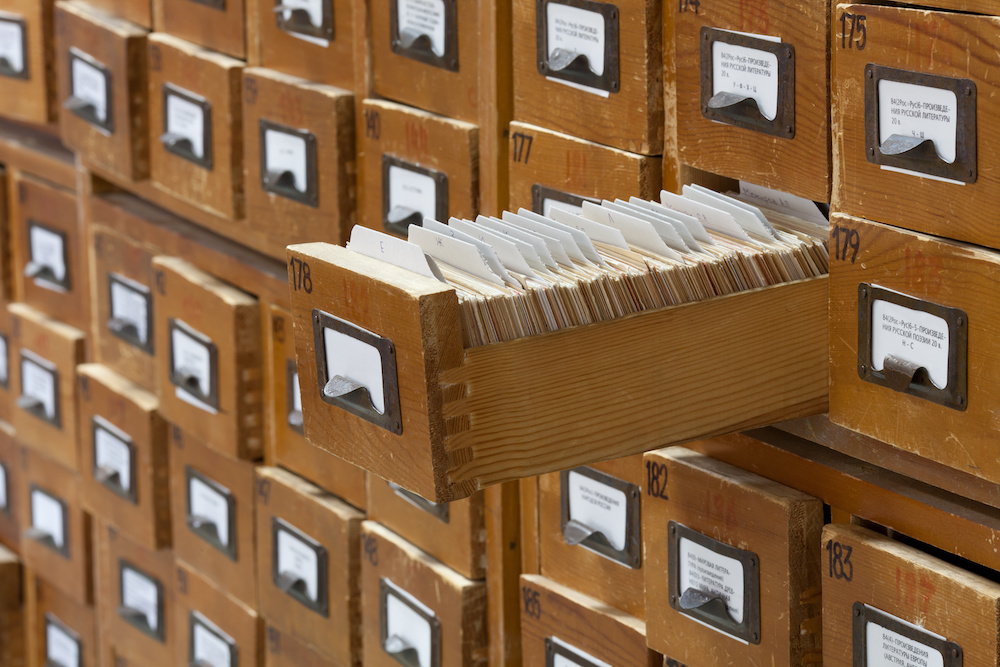
An “ancient” card catalog. Old school database. Our memories are filed away and indexed in the hippocampus. But with less paper.
McHugh: Just like you said. Young people today may not look through the card catalog at the library to find the shelf with the book they need anymore, but when you and I were younger, we found books in the library by looking up the Dewey decimal number from the card catalog. This indexing process is what the hippocampus does. However, if a certain amount of time has passed since the memory was formed, it will remain as a memory even if the hippocampus is damaged. In fact, in Molaison’s case, his childhood memories remained relatively intact. Memories that we deem important are consolidated and stored independently of the hippocampus. A part of the frontal cortex, called the anterior cingulate cortex (ACC) in mice, takes over the role of the hippocampus. Over time, a different area inherited from the hippocampus takes over its indexing role.
Takeuchi: So, it is not just the hippocampus but ultimately a large region of the brain that is important for memory. If the mechanism of how memories are stored and recalled in the brain is well understood, do you think it would be possible to create a small terminal with a similar system that could be implanted in the brains of Alzheimer’s disease patients or patients with memory impairments to function as an alternative memory system? It would be like implanting something like computer memory into the brain and storing more and more memories there.
McHugh: It would be very difficult to achieve such a science fiction-like technology. On the other hand, I believe that technology to enhance the function of memory in people with diseases and disabilities may be feasible. Rather than recalling certain memories, it may be possible to improve the function of the entire memory system. In recent years, deep brain stimulation therapy has been used to treat various diseases, such as Parkinson’s disease and severe depression, by electrically stimulating specific areas of the brain, and it has shown some effectiveness. There is also potential in terms of memory enhancement for people who are not ill. There are actually patterns of activity in the hippocampus and other circuits that are specifically observed during memory writing. I believe that it is physiologically possible to enhance memory functions by externally stimulating such patterns in the brain.
Memory function and technical possibilities
Takeuchi: While there are a number of different ethical issues to discuss in this regard, do you think such technology will make people happy?
McHugh: I believe it has the potential to work positively. The challenge at this point with deep brain stimulation therapy is that we do not understand how it works, even though we know it is effective. The challenge with this actually applies to many other medical treatments as well. There are many drugs we already prescribe and use that we know are effective but do not know how they work.
Takeuchi: Akiko Hayashi (Takagi) told me earlier that this is often the case with regard to brain psychiatric disorders.
McHugh: I have a friend and researcher studying Alzheimer’s disease, Li-Huei Tsai, who runs a lab at MIT. Animal brain waves have various wavelengths, of which gamma waves act near the hippocampus, and gamma waves are said to play an important role in cognitive functions in the frontal lobes of the cerebral cortex and in memory formation in the hippocampus. Gamma waves are 40 Hz, or 40 active frequencies per second. We did an experiment in which we stimulated a mouse model of Alzheimer’s disease with 40 Hz, the same 40 Hz as the gamma waves. The gamma wave oscillations were induced in a large part of the mice’s brains, and this gamma wave induction by light stimulation actually improved memory and cognitive functions in the Alzheimer’s disease model mice.
Takeuchi: Alzheimer’s is a disease for which developing effective treatments has been challenging, but these results show great potential, don’t you think?
McHugh: Dr. Tsai actually founded a company with her partners to test and treat Alzheimer’s patients with this technology. The results so far suggest effectiveness. What is especially impressive is that this method is neither pharmacological nor an invasive technique that could cause bodily trauma. It is simply an external 40 Hz sensory stimulation of the patient’s brain with light and sound. It is not a fundamental treatment for Alzheimer’s disease, but it does seem to preserve memory function and slow the progression of the disease. If it showed the desired effect, it would be wonderful.
You made it to the end of part 1!!! stay tuned for part 2, coming soon … ? ? (You can read the conversation in Japanese here)
It all started with my brother
Takeuchi: Tom, you were born in Chicago, in the United States, received your PhD degree from MIT (Massachusetts Institute of Technology), and after working as a postdoctoral fellow, you built your research team in Japan. I heard that you have been doing research on memory since moving from the States. Did you originally have a clear reason for wanting to become a research scientist?
McHugh: I enjoyed science and math in school and performed well in those subjects, so even at an early age I liked the “idea” of being a scientist.. At the time however, I honestly did not really know what that would mean, what training was needed, what jobs were actually available, but I loved science and was very passionate about it.
Takeuchi: Were you interested in the sciences in general?
McHugh: I was particularly interested in biology. I was very impressed with my first advanced biology class in ninth grade (equivalent to Year 2 of junior high school in Japan), and the teacher was wonderful. He gave us the chance to learn through simple but engaging experiments in the classroom and that really brought the ideas and concepts to life.
Takeuchi: I heard that you have a big family with nine brothers and sisters. Even in Japan, large families are rare these days due to the declining birthrate. In what order were you born among your siblings?
McHugh: I was the ninth, the last child.
Takeuchi: Being the youngest of nine siblings, you must have many stories to tell! Have you been influenced by your eight brothers and sisters in your life and, in particular, in your career?
McHugh: Yes, I was and am still very much influenced by them. I am especially influenced by my oldest brother, Patrick, who passed away about 6 years ago. He had Down Syndrome, also known as Trisomy 21. This is a genetic disorder in which there are three copies of chromosome 21 instead of the usual two. Each of my seven brothers and sisters, except Patrick, went on to have a higher education and left home to become independent, but my brother lived at home all the time. I also lived at home until I went to college, so we spent the longest time together and were very close. I think he was the one who first got me interested in the origins of life and biology.
Takeuchi: Your closest brother seems to have left a major impact on your life, indeed. I have heard that Down Syndrome results in the slow development of the body and mind and that the probability of health-related complications is relatively high.
McHugh: First of all, my brother lived to the age of 60, even though doctors originally said he would not live for longer than a week or two after he was born. I wondered what determines the length of one’s life. It is also known that Down Syndrome is more likely to occur in babies born to relatively older mothers compared to younger mothers. But since my brother was my mother’s first child and I was her last, that is, I was the child she had when she was considerably older, this is a relatively rare instance where this observation may not apply. However, although rare, it did happen to my mother and my brother. In other words, this is a genetic mutation that can happen to anyone with a certain probability, and I have always wondered how it is possible to have developmental differences and symptoms just because of an increase in one chromosome copy.
Patient HM and the beginning of memory research
Takeuchi: You spent your childhood pondering the mysteries of life and biology. Then, you went on to higher education and decided to pursue a career in science. I heard that you have been researching memory since your doctoral research days as well. It sounds interesting.
McHugh: Our memory is full of mysteries. How are memories encoded by the brain? How are these memories stored over long periods and how retrieved and recalled? These are some of the big questions about memory. In my laboratory, we are working to categorize those questions a bit more and explore how the circuits woven by neurons (nerve cells) involved in memory are organized, how there are patterns of neural circuit activity, and how these physiological patterns are related to various memory processes. The perceptions, sensations, and identities that seem so obvious, such as “who I am,” are shaped by memories within me from the past to the present. Memory is one of the essential brain functions, isn’t it? Although research on memory has been progressing rapidly in recent years, there is still a lot we do not know. I have realized since I was a student that it would take many years to clarify the physiological mechanisms of memory ……and I was absolutely right.
Takeuchi: I see. Memory is a natural brain function, so I think it is actually rather surprising that we still have such limited understanding of how it works. With the exception of Alzheimer’s disease and other brain diseases, our brain stores past memories, what we have learned, and spatial maps to assist us with navigating to specific locations; I think we can freely recall these kinds of information when needed.
McHugh: Yes, that is right. In fact, a major turning point event recently occurred in memory research. A famous patient contributed not only to memory research but also to the advancement of the field of neuroscience. He was initially referred to by his “HM,” but now his name, Henry Molaison, has been published. He was born in 1926 and died in 2008. Molaison developed epilepsy as an aftereffect of a bicycle accident as a child, which was quite severe and difficult to cure with the treatments and medications available at the time. His epileptic seizures were frequent and interfered with his daily life, and his doctors decided to try a surgical approach. That was in 1953. At the time, the medical community was already aware that epileptic seizures originate from activity in the hippocampus. As the doctors hypothesized, if we physically remove the hippocampus and surrounding brain regions, the seizures might stop.
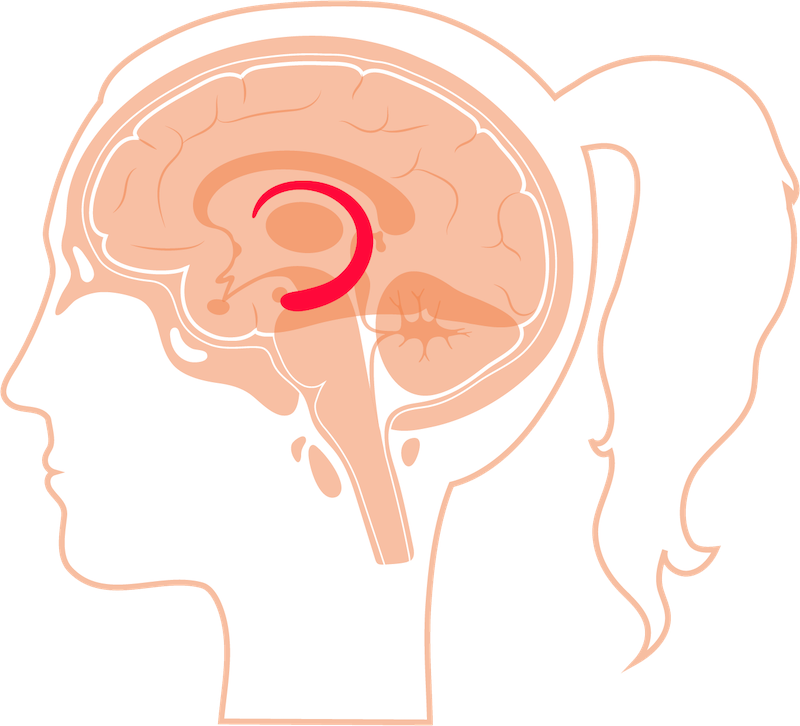
Location of the hippocampus. You can read more about patient HM and see the difference between a normal brain and HM’s brain after surgery by following this link: https://www.brainfacts.org/in-the-lab/tools-and-techniques/2018/the-curious-case-of-patient-hm-082818
Takeuchi: So, for example, in the case of cancer, it is the same as the idea of removing bad cells.
McHugh: That is right. As a result, the surgery was successful enough in its objective to “get rid of the seizures,” and his epilepsy was truly in remission. However, it came at an unforeseen and significant cost. After the surgery, Molaison lost all ability to form new memories—that is, he developed severe amnesia. This case was the first clue to show mankind that the hippocampus plays an important role for memory, and it led to major findings in memory research.
Takeuchi: So, it was only after the removal of a specific brain region that its role was understood. As you say, the surgery was performed in the 1950s; so it was not that long ago but actually more recent.
McHugh: Although the exploration of the brain has been ongoing since the times of the ancient Greeks, formal research has only been conducted recently. Starting with the lessons learned from the Molaison case, research on the non-surgical damage caused by stroke and various types of diseases caused by damage to the hippocampus has progressed. In addition, studies have been conducted to examine the function of the hippocampus in detail using model animals such as mice. Particularly, in the past 20 years, innovative advancements have been made in the technologies used to conduct research, allowing us to observe physical phenomena in the brains of model animals and to test hypotheses in vivo. It is now clear that the hippocampus is necessary for the formation of new memories—at least those called “episodic memories,” among other types. That requires the hippocampus to be in perfect condition. This is an absolute necessity.
Takeuchi: What are episodic memories?
McHugh: They are memories of when, where, and what you did. Most of the memories of what we experienced in the past are episodic memories.
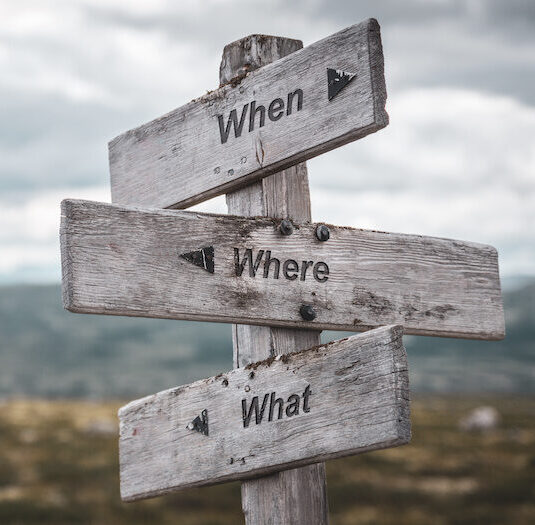
Episodic memories are the what, where, and when of your experiences.
Takeuchi: Does that mean that if we lose the hippocampus, we cannot remember events that happened, for example?
McHugh: That’s correct. In Molaison’s case, other types of memory functioned well. Psychologists Brenda Milner and Suzanne Corkin studied Molaison for 50 years (see: “Permanent Present Tense: The Unforgettable Life of the Amnesiac Patient, H.M.“). They had Molaison perform and record various memory tasks postoperatively, and he came to the lab enthusiastic about them. For example, he had no problems with the task of touching the different colored blocks—red, blue, green, red, blue—and so on in a predetermined order. This type of memory is called procedural memory, and it does not require the hippocampus. The next day, however, when they asked Molaison, “Have you ever done this task before?” he replied, “No, I haven’t.” When he actually tried to do the task, he found that he had done it once the day before, and so he improved, but he still could not remember that he had completed the task before at all. Other assignments that required short-term memory, such as completing words from images seen just before, were completed without any problem, and he still remembered the exercises he had learned in the past. In other words, his brain was fully functional with respect to motor, procedural, and short-term memory, but only episodic memory, such as “Have you done that in the past?” was not stored or recalled.
The many kinds of memory
Takeuchi: So, you are saying that there are different types of memories and that some memories depend on the hippocampus and some do not. That shows complexity. The human memory seems particularly complex, but what about small insects such as ladybugs and beetles?
McHugh: Even organisms with simple structures such as insects are fully capable of memorizing things. Insects actually have a very good memory, and research on their memory and behavior is also progressing. For example, several labs at RIKEN CBS use insects as models for research on memory, such as associating certain experiences with smells. In my laboratory, we want to study the mechanism of human episodic memory, and so we use the mammalian mouse as an animal model that is similar to humans.
Takeuchi: How about that. So, there are different animals and different approaches to research depending on the type of memory, and of these, your research has focused specifically on episodic memory.
McHugh: Yes, in my laboratory we focus on what is called episodic memory or, to use a slightly more difficult term, declarative memory. In other words, memories that can be described in human terms. These are memories of events in our lives that remain in our memories, such as when, where, and with whom we partied. These memories shape who we are and define our existence. But this is only one type of memory. For example, suppose you play tennis and you have mastered the forehand. The forehand movement is motor memory, not stated memory. It is a memory achieved through practice and repetition, so you do not normally “remember the day you mastered the perfect forehand.” But if, for example, you happen to have dinner with your best friend at a restaurant on the same day as your tennis lesson, and you hear the news that your best friend is getting married, that event will remain as an episodic memory.
Takeuchi: So, for example, if the hippocampus, which is important for memory, ceases to function, is there a backup or some other brain region that can take over the memory function?
McHugh: In terms of the formation of new episodic memories, the answer seems to be no. For example, Clive Wearing, a man in the UK who had some form of encephalitis caused by a viral infection that damaged only the hippocampus, had much the same result as Molaison—he is still unable to form new memories.
The hippocampus organizes or indexes memory
Takeuchi: So ultimately, how can we describe what it is that the hippocampus does?
McHugh: The hippocampus receives all kinds of perceptual information, such as visual, auditory, olfactory, and somatosensory information. At this stage of information entry, we do not know what we need to remember. That is why we use the hippocampus to index the details of a particular event or experience so that we can connect it to other information. We connect everything to everything else and put the information together into a representation that we call memory.
Takeuchi: I imagine it like putting things in an index.
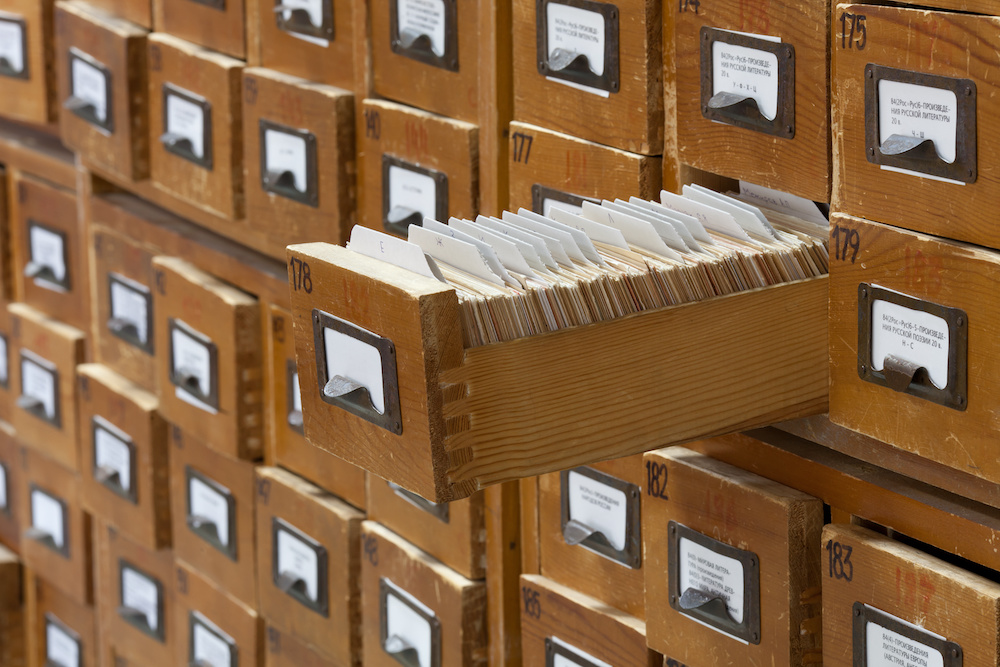
An “ancient” card catalog. Old school database. Our memories are filed away and indexed in the hippocampus. But with less paper.
McHugh: Just like you said. Young people today may not look through the card catalog at the library to find the shelf with the book they need anymore, but when you and I were younger, we found books in the library by looking up the Dewey decimal number from the card catalog. This indexing process is what the hippocampus does. However, if a certain amount of time has passed since the memory was formed, it will remain as a memory even if the hippocampus is damaged. In fact, in Molaison’s case, his childhood memories remained relatively intact. Memories that we deem important are consolidated and stored independently of the hippocampus. A part of the frontal cortex, called the anterior cingulate cortex (ACC) in mice, takes over the role of the hippocampus. Over time, a different area inherited from the hippocampus takes over its indexing role.
Takeuchi: So, it is not just the hippocampus but ultimately a large region of the brain that is important for memory. If the mechanism of how memories are stored and recalled in the brain is well understood, do you think it would be possible to create a small terminal with a similar system that could be implanted in the brains of Alzheimer’s disease patients or patients with memory impairments to function as an alternative memory system? It would be like implanting something like computer memory into the brain and storing more and more memories there.
McHugh: It would be very difficult to achieve such a science fiction-like technology. On the other hand, I believe that technology to enhance the function of memory in people with diseases and disabilities may be feasible. Rather than recalling certain memories, it may be possible to improve the function of the entire memory system. In recent years, deep brain stimulation therapy has been used to treat various diseases, such as Parkinson’s disease and severe depression, by electrically stimulating specific areas of the brain, and it has shown some effectiveness. There is also potential in terms of memory enhancement for people who are not ill. There are actually patterns of activity in the hippocampus and other circuits that are specifically observed during memory writing. I believe that it is physiologically possible to enhance memory functions by externally stimulating such patterns in the brain.
Memory function and technical possibilities
Takeuchi: While there are a number of different ethical issues to discuss in this regard, do you think such technology will make people happy?
McHugh: I believe it has the potential to work positively. The challenge at this point with deep brain stimulation therapy is that we do not understand how it works, even though we know it is effective. The challenge with this actually applies to many other medical treatments as well. There are many drugs we already prescribe and use that we know are effective but do not know how they work.
Takeuchi: Akiko Hayashi (Takagi) told me earlier that this is often the case with regard to brain psychiatric disorders.
McHugh: I have a friend and researcher studying Alzheimer’s disease, Li-Huei Tsai, who runs a lab at MIT. Animal brain waves have various wavelengths, of which gamma waves act near the hippocampus, and gamma waves are said to play an important role in cognitive functions in the frontal lobes of the cerebral cortex and in memory formation in the hippocampus. Gamma waves are 40 Hz, or 40 active frequencies per second. We did an experiment in which we stimulated a mouse model of Alzheimer’s disease with 40 Hz, the same 40 Hz as the gamma waves. The gamma wave oscillations were induced in a large part of the mice’s brains, and this gamma wave induction by light stimulation actually improved memory and cognitive functions in the Alzheimer’s disease model mice.
Takeuchi: Alzheimer’s is a disease for which developing effective treatments has been challenging, but these results show great potential, don’t you think?
McHugh: Dr. Tsai actually founded a company with her partners to test and treat Alzheimer’s patients with this technology. The results so far suggest effectiveness. What is especially impressive is that this method is neither pharmacological nor an invasive technique that could cause bodily trauma. It is simply an external 40 Hz sensory stimulation of the patient’s brain with light and sound. It is not a fundamental treatment for Alzheimer’s disease, but it does seem to preserve memory function and slow the progression of the disease. If it showed the desired effect, it would be wonderful.
You made it to the end of part 1!!! stay tuned for part 2, coming soon … ? ? (You can read the conversation in Japanese here)





